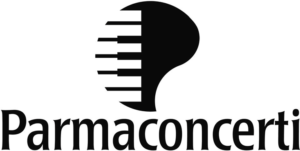DIFFERENTIAL COST ANALYSIS: Examples & Application to Businesses
Certain costs will be incurred whether there is an increase in production or not, which are not computed when determining incremental cost, and they include fixed costs. However, care must be exercised as allocation of fixed costs to total cost decreases as additional units are produced. The company then calculates the estimated revenue by multiplying the expected output at a specific level by the selling price. If companies add or eliminate products, they usually increase or decrease variable costs.
Incremental cost is the total cost incurred due to an additional unit of product being produced. Incremental cost is calculated by analyzing the additional expenses involved in the production process, such as raw materials, for one additional unit of production. Understanding incremental costs can help companies boost production efficiency and profitability.
- If no excess capacity is present, additional expenses to consider include investment in new fixed assets, overtime labor costs, and the opportunity cost of lost sales.
- Take a close look at Figure 7.1 before reading the description of this information that follows.
- Knowing the difference between the two makes determining which expenses apply to a certain decision easier.
- This is an investment that a company has already made and will not be able to recover.
- It is a useful tool for making strategic decisions in various business contexts.
That is, all variable costs are differential costs for the two alternatives facing the Company. The long-run incremental cost for lithium, nickel, cobalt, and graphite as critical raw materials for making electric vehicles are a good example. If the long-run predicted cost of the raw materials is expected to rise, then electric vehicle prices will likely be higher in the future. ein number The attempt to calculate and accurately predict such costs assist a company in making future investment decisions that can increase revenue and reduce costs. The concept of sunk costs describes a cost that’s already been incurred and does not impact any decision made by management or between alternatives. The cost is unlikely to increase in the future or disappear completely.
This chapter has focused on using relevant revenue and cost information to perform differential analysis. Activity-based costing first assigns costs to activities and then to products or customers based on their use of the activities. Activity-based costing is a refined approach to allocating costs to products or customers. This means that there will be a baseline cost, irrespective of the activity level, plus a variable cost that changes to a degree as the activity level changes.
Other terms that refer to sunk costs are sunk capital, embedded cost, or prior year cost. To fully comprehend the concept of incremental analysis, one has to understand its underlying concepts. The three main concepts are relevant cost, sunk cost, and opportunity cost. Differential cost analysis aids businesses in determining the long-term financial effects of strategic decisions like market development, the introduction of new products, or capital expenditures. It assists in determining how profitable these choices will be in the long run. Companies may make sure that their pricing covers all costs while remaining competitive in the market by understanding the incremental costs linked to producing extra units.
Uses of Incremental Cost Computations
The differential revenue is calculated by subtracting sales at one activity level from sales at the preceding level. To find the most profitable level of production and the best selling price, the differential cost is compared to the differential revenue. When the differential revenue exceeds the differential cost, management will opt to expand the level of output. To illustrate, assume that the Campus Bookstore is considering eliminating its art supplies department.
- Companies are frequently forced to choose between different business solutions at varying costs.
- For example, A was offered a $50,000-a-year job, but he chose to complete his education in order to have a better future.
- Because the sunk costs are present regardless of any opportunity or related decision, they are not included in incremental analysis.
- The opportunity cost of sticking with the old advertising technique is now $4,000 ($14,000 – $10,000).
This is especially important when making decisions about pricing and manufacturing. Incremental costs are the extra expenses spent when a business produces one more unit of a product, offers an additional service, or takes a certain action. These expenses are directly related to the increasing output or activity by one unit. Sunk costs refer to costs that a business has already incurred, but that cannot be eliminated by any management decision.
The original cost of this store equipment is a sunk cost and should have no bearing on the decision whether to eliminate charcoal barbecues. However, management may want a more concise explanation of why profit is $10,000 higher when all three product lines are maintained. While the company is able to make a profit on this special order, the company must consider the ramifications of operating at full capacity.
Difference between Marginal and Differential Costing
As a result, businesses must reclassify costs as those that would change as a result of the action and those that would not. To determine whether the new selling price is viable, the corporation computes the differential cost by subtracting the cost of the current capacity from the cost of the proposed new capacity. To estimate the minimal selling price, the differential cost is divided by the increased units of production. Any price that is more than the minimum selling price represents additional profit for the company. The difference in cost between two alternative decisions or a change in output levels is referred to as differential cost. When there are several possibilities to explore, and a decision must be made to select one option and discard the rest, the notion is applied.
Relevant Versus Non-Relevant Costs
Depending on the business, it may have a relatively large base of fixed costs. If no excess capacity is present, additional expenses to consider include investment in new fixed assets, overtime labor costs, and the opportunity cost of lost sales. Relevant costs (also called incremental costs) are incurred only when a particular activity has been initiated or increased. (iii) The selling price recommended for the company is Rs. 16/- per unit at an activity level of 1,50,000 units.
Free Accounting Courses
A manufacturing concern sells one of its products under the brand name ‘utility’ at Rs. 3.50 each, the cost of which is Rs. 3.00 each. (i) Prepare a schedule showing the total differential costs and increments in revenue. The data used for differential cost analysis are cost, revenue and investments involved in the decision-making problem. Businesses frequently have to determine whether to keep making or offering a specific good or service. The analysis helps determine if it would be financially viable to stop producing a product or whether changes could make it more profitable. Assisting organizations in maximizing their profits is one of the main functions of differential costs in decision-making.
Using Differential Analysis to Make Decisions
An example is when a company purchases a machine that becomes obsolete within a short period of time, and the products produced by the machine can no longer be sold to customers. Differential cost refers to the difference between the cost of two alternative decisions. The cost occurs when a business faces several similar options, and a choice must be made by picking one option and dropping the other. When business executives face such situations, they must select the most viable option by comparing the costs and profits of each option. Differential cost is the variation in costs (increase/decrease) between two available opportunities. As the name implies, incremental cost is the rise in the cost of production caused by an increase in the number of operations.
Consider a company engaged in plastic bag manufacturing that acquires an advanced machine to double its current production of plastic bags. As soon as the company puts the new machine into use, the government bans the manufacturing of plastic bags in the country and makes it a crime for any person to manufacture or sell plastic bags. The new regulation renders the machine and the produced plastic bags obsolete, and the company cannot change the government’s decision. Businesses use differential cost analysis to make critical decisions on long-term and short-term projects.


